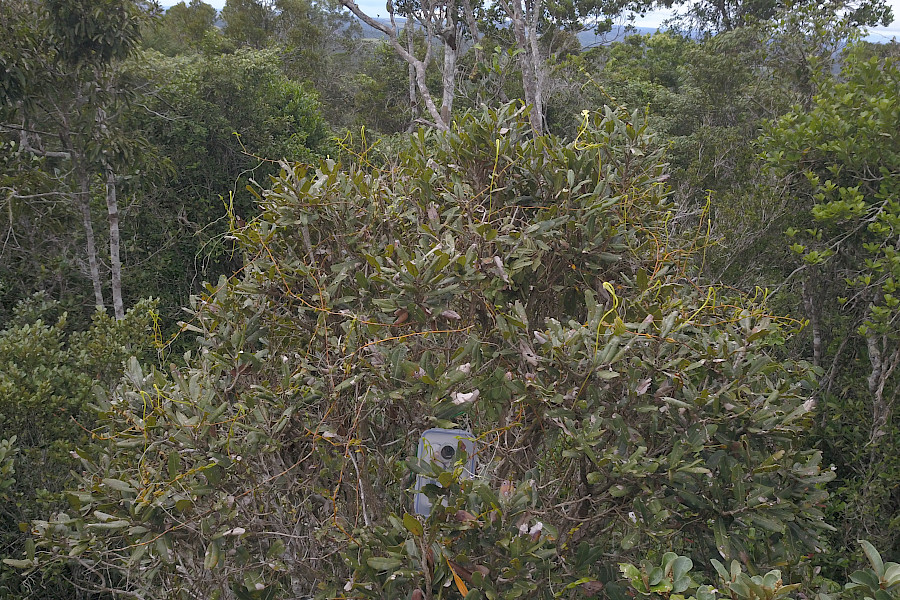International team discovers new species of orchid from Madagascar
"In contrast to its tiny 2 cm long flowers, it has the longest nectar spur among about 370,000 species of flowering plants, establishing a new paradigm of ecological hyper-specialisation with great value for teaching evolution," explains João Farminhão.
João Farminhão, a researcher at the Centre for Functional Ecology (CFE) of the Faculty of Sciences and Technology of the University of Coimbra (FCTUC) and the UC Botanical Garden (JBUC), spearheaded the discovery of a new orchid species from Madagascar, boasting a 33-centimetre (cm) long nectar tube.
The research, now published in the journal Current Biology, describes the new orchid, Solenangis-gigante (Solenangis impraedicta): "In contrast to its tiny 2 cm flowers, it has the longest nectar spur of any known plant relative to flower size, among some 370,000 flowering species, establishing a new paradigm of ecological hyperspecialisation with significant value for the teaching of evolution”, explains João Farminhão.
The scientific name of the Solenangis-gigante - impraedicta (Latin for 'unpredicted'), - "is a reference to Darwin's prediction of the star orchid pollinator, which took 130 years to be fully confirmed," explains the author of the study. Darwin's suggestion of the existence of a large, long-tongued moth in Madagascar, capable of reaching the nectar of the Angraecum sesquipedale orchid, which has a nectary over 30 cm long, is one of the most famous predictions in the history of biology and is associated with the genesis of the concept of co-evolution".
“The nocturnal hawkmoth Xanthopan praedicta is one of the possible pollinators. Apart from Angreco-cometa, only two other known orchid species in Madagascar have a spur of comparable length. No species with such an extreme adaptation to pollination by Darwin's orchid moths had been discovered since 1965,” claims the researcher. "Sadly, however, it is an endangered species due to the destruction of its habitat, combined with mining activities and possibly the illegal harvesting of plants for the lucrative international orchid trade," the author laments, adding that, to protect it from the greed of collectors, the exact coordinates of its natural habitats have not been released".
Furthermore, "in order to ensure its conservation in botanical gardens around the world and to meet the future demand for this species in private collections, the production of seeds for the propagation of the species in cultivation has already begun," he concludes.
The scientific article “A new orchid species expands Darwin's predicted pollination guild in Madagascar” is available here .


